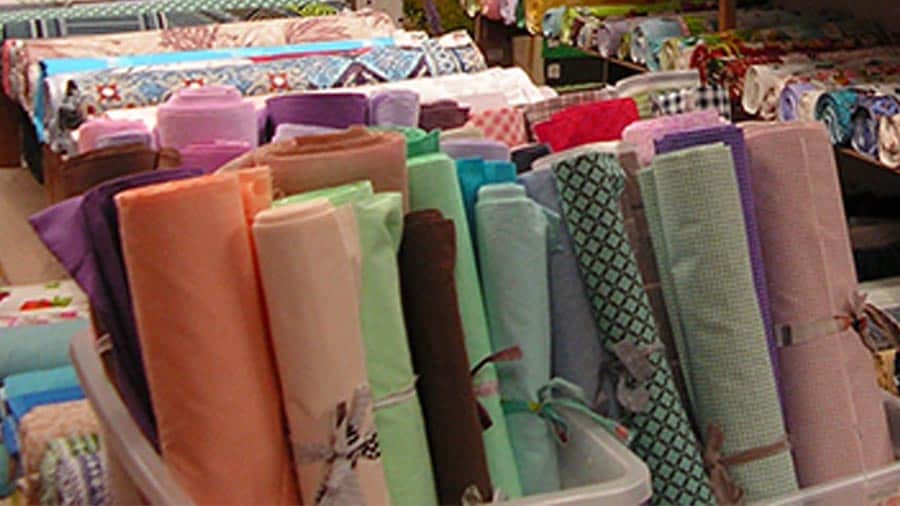Learn the best techniques to store fabric long-term to ensure its preservation from proper folding methods to ideal storage conditions. When it comes to preserving your fabric treasures for the long haul, proper storage is paramount.
Whether you’re safeguarding heirloom quilts, vintage clothing, or expensive textiles, knowing how to store fabric long-term can make all the difference in maintaining their quality and longevity.
Proper fabric storage is key to keeping your craft supplies pristine for years.
Here’s how to ensure your fabric stash stays fresh and ready for your next project:
1. The Importance of Proper Fabric Storage
Fabric fibers are delicate and prone to damage from various environmental factors. Why proper storage is crucial lays the foundation for effective preservation strategies.
2. Choosing the Right Storage Location
The location where you store fabric plays a significant role in its preservation. From avoiding direct sunlight to controlling temperature and humidity levels, I’ll delve into the key considerations for selecting an ideal storage spot.
3. Preparing Fabric for Long-Term Storage
Before stowing away your fabrics, it’s essential to properly prepare them to minimize the risk of damage. Learn the steps to take to ensure your textiles are clean, dry, and free from pests before storage.

3.1. Cleaning Fabrics Before Storage
Removing dirt, dust, and stains is essential before placing stored fabric in long-term. Discover the best cleaning methods for different types of textiles, from delicate silks to sturdy cotton.
3.2. Ensuring Fabrics are Completely Dry
Moisture is the enemy of fabric preservation, leading to mold, mildew, and deterioration. Explore techniques for thoroughly drying fabrics before storing them to prevent moisture-related damage.
4. Choosing Appropriate Storage Containers
The containers you use can make a significant difference in the preservation of your fabrics. From acid-free boxes to breathable garment bags, we’ll discuss the best options for different types of textiles.

5. Folding vs. Rolling: The Debate Unveiled
The age-old question: Is it better to fold or roll fabric for storage? We’ll weigh the pros and cons of each method to help you determine the best approach for your specific fabrics.
6. Utilizing Acid-Free Tissue Paper and Interfacing
Adding an extra layer of protection can safeguard fabrics from creases, wrinkles, and discoloration. Learn how to use acid-free tissue paper and interfacing to preserve the integrity of your textiles.
7. Monitoring and Maintaining Storage Conditions
Once fabrics are safely stored away, it’s crucial to periodically check and maintain the storage environment. Discover tips for monitoring temperature, humidity, and pest activity to ensure optimal conditions.

8. Reviving Stored Fabrics: Tips for Refreshing and Restoring
Over time, stored fabrics may require some rejuvenation to maintain their quality. Explore techniques for refreshing and restoring textiles that have been in long-term storage.
9. Incorporating Natural Pest Deterrents
Pests such as moths and silverfish pose a threat to stored fabrics. Learn how to incorporate natural deterrents like cedar blocks and lavender sachets to protect your textiles from insect damage.

10. Long-Term Fabric Storage Dos and Don’ts
Summing up the dos and don’ts of fabric storage to ensure you’re following best practices and maximizing the longevity of your textiles.
FAQs
How often should I check on my stored fabrics?
It’s advisable to check on your stored fabrics at least once every few months.
Regular inspections allow you to ensure that the storage conditions remain optimal and that there are no signs of pests, moisture, or other issues that could potentially damage your fabrics.
Can I store fabric in plastic containers?
While plastic containers may seem convenient, they’re not always the best choice to store fabric long-term.
Plastic can trap moisture, leading to mold and mildew growth, especially in humid environments. Opt for breathable storage options like fabric garment bags or acid-free boxes to maintain proper airflow and prevent moisture buildup.
Is it necessary to vacuum-seal stored fabrics?
Vacuum-sealing can be beneficial for certain types of fabrics, particularly those that are prone to damage from moisture, pests, or air exposure.
It’s not always necessary and may not be suitable for delicate or heirloom textiles. Before vacuum-sealing, ensure that your fabrics are clean, dry, and properly prepared for storage.
Should I use mothballs to deter pests?
While mothballs are effective at repelling moths and other fabric-damaging pests, they contain chemicals that can be harmful to humans and pets.
Instead of mothballs, consider using natural alternatives like cedar blocks, lavender sachets, or essential oils, which are equally effective at deterring pests without posing health risks.
Can I store fabric in a basement or attic?
Basements and attics can be challenging environments to store fabric due to fluctuating temperatures, high humidity levels, and potential exposure to pests. If you must store fabrics in these areas, take extra precautions to ensure they’re properly protected with appropriate storage containers and pest deterrents.
What is the best way to store delicate lace fabric?
Delicate lace fabric requires special care to prevent damage and preserve its intricate details. The best way to store lace is to gently roll it onto a cardboard tube or acid-free paper core to prevent creasing and distortion.
Place the rolled lace in a breathable fabric bag or acid-free box, ensuring it’s stored flat to maintain its shape and integrity.
Conclusion
By following the strategies you can confidently store fabric long-term, knowing they’re protected from damage and deterioration. With the right techniques and proper maintenance, your cherished textiles can remain in pristine condition for generations to come.
